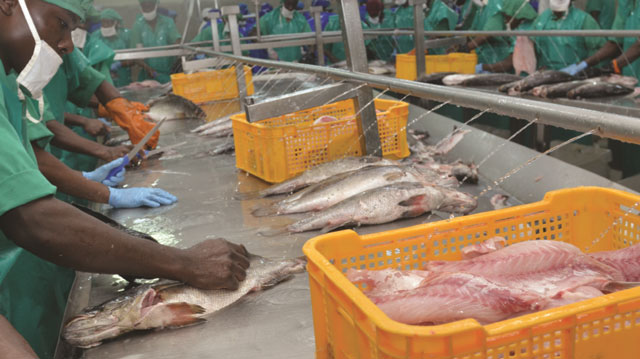Uganda’s President Yoweri Museveni became the country’s political leader in 1986. At the time Uganda was considered one of the poorest countries in Africa. What is not always mentioned about the economy of Uganda is that Uganda is one of the few African countries that actually has a large percent of African entrepreneurs. This can be attributed to Idi Amin’s pro-African ownership policies. African ownership of business and the economy is something which is unprecedented in Africa.
Uganda, like most African countries is a primarily agro-based economy. From the 1980s, about 80% of the workforce was consistently employed in agriculture. By 2000, agriculture contributed 32% of Gross Domestic Product (GDP) of the country. Much of the agricultural economy was driven by exports of coffee, tea and fish.

In 1996, coffee was the largest export crop responsible for up to 65% of the country’s export income. In the late 90s and early 2000s, global prices began to decline and by 2002, coffee only contributed 30% of export earnings. This meant that Uganda had to find another way to fill that gap in export income. Uganda found a substitute in tea and quickly became a leading exporter of tea and fish. During this time, Uganda was also selected as one of the few countries to receive debt relief for its successful implementation of stringent economic reform projects and has continued to qualify for significant debt relief since then.
In 2002, the Ugandan government decided to diversify into flowers. However, flower production requires high start-up costs which meant that mostly European companies and a few local could afford to invest in that sector. During that period, Uganda also diversified into fishing and was able to penetrate the European market because European consumers were shunning poor quality Chinese fish. The problem Ugandan fisheries experienced came from pesticide poisoning of the lakes. The poisoning was brought about by what they call water hyacinth which poisons natural water sources. The plant is believed to have been brought in by the Belgians. The Belgians were responsible for bringing in this foreign plants which are now threatening fresh water.
Uganda’s economy is also driven in part by mining. Their reserves include copper, tungsten, cobalt, columbite-tantalite, gold, phosphate, iron ore, and limestone. Gold, cobalt, and columbite-tantalite. Gold is an important export, but it is often smuggled into Uganda from the Democratic Republic of the Congo.
Of course some of the issues that the economy has faced have been attributed to war. The war presented a threat to the government which resulted in the government spending 19% of its 2004- 2005 budget on defense. The opportunity cost of spending all that money on security means that the money cannot be directed to more productive economic activities.
Manufacturing during this period contributed only a small portion of the gross domestic product of Uganda. The major industries were based on processing such agricultural products as tea, tobacco, sugar, coffee, cotton, grains, dairy products, and edible oils. Also important were beer brewing and the manufacture of cement, fertilizers, matches, metal products, paints, shoes, soap, steel, textiles, and motor vehicles. Since 1990, with the return of stability to the country, foreign companies and lending institutions have invested in such businesses as textile and steel mills, a car assembly plant, a tannery, bottling and brewing plants, and cement factories.
From the 1980s – 2004, Uganda also developed a number of cottage industries, which produced a wide variety of domestic and commercial iron and wooden products ranging from security doors, household and farm goods, numerous spare parts, and furniture.




